Pros and cons of finishing with pvc panels
Decorating the kitchen with panels has its advantages and disadvantages over other methods. Let's consider them in more detail:
| pros | Minuses |
|---|---|
|
|
What types of panels are there?
Before sheathing the kitchen with plastic panels, you should figure out what they are. Let's consider the main categories.
4 types are distinguished in shape and size:
- Panels. Lamellas familiar to many, 150-500 mm wide. The standard length is 3 m. After installing the panels, the joints will be almost invisible, so feel free to purchase compositions with a pattern or imitation of materials.
- Lining. It looks like a standard wooden one, but it is made of plastic. The average width is 10-12 cm, the length of one lamella is 2-6 m. The lath panels can be laid both horizontally and vertically.
- Tile. Square pieces come in a variety of sizes. Side length varies from 300 to 980 mm. Due to the fastening in the grooves, the seams do not diverge and the tiles form a single composition.
- Sheets. The largest pvc option. Sheet plastic reaches 2 meters wide and 4 meters long.
In the photo, an apron for a tile made of plastic
Also, plastic panels differ in the way the pattern is applied:
- Thermal transfer. The cheapest and most unreliable method is film transfer. The print is easily erased and faded in the sun.
- Offset printing. The panel itself falls under the printer shafts, the picture looks natural and will last a long time.
- Lamination. In this case, a film with an image is simply glued onto the plastic - this method is the most reliable and is not afraid of the sun or chemical cleaning agents.
Applications in the kitchen
Kitchen paneling can affect all surfaces or one of them. Most often, plastic panels are used to decorate the ceiling, walls and an apron.
Repair of the kitchen ceiling with plastic strips. Ceiling decoration is made with special lamellas - they differ from wall ones in less strength and low weight. You need to handle them as carefully as possible, there is a high risk of damaging the material during installation.Panel ceiling advantages:
- does not deform even after the flood;
- withstands any temperature extremes;
- does not require surface preparation;
- hides wiring and communications.
Most often, plain pvc panels are used, but to create an original interior, you can decorate the ceiling with printed strips.
In the photo, the ceiling is trimmed with PVC panels
Wall decoration in the kitchen with panels. Wall cladding materials are stronger and heavier. Kitchen wall designs don't look cheap with quality slats. Plain strips or with imitation of stone / wood texture look beneficial. For walls in the kitchen, choose seamless structures, otherwise dust and dirt will accumulate in small gaps, which is almost impossible to clean.
Horizontal wall decoration in the kitchen will expand the room, and vertical installation will visually raise the ceiling.
In the photo, horizontal installation of panels
Installation on a kitchen apron. The area that suffers the most during kitchen work is above the countertop. PVC panels for the apron should:
- withstand high temperatures (170C);
- have a laminated surface;
- be mounted without seams;
- go behind kitchen cabinets from above and below.
If your apartment has a gas stove, give up the idea of trimming the apron with panels or additionally protect the cooking area. Even heat-resistant lamellas are afraid of open fire and can melt.
One way or another, decorating a kitchen apron with pvc panels is the most budgetary option that allows you to bring an unusual design to life. From bright colors, to paintings depicting urban motifs, landscapes or still life.
In the photo there are plastic sheets for mosaic
What to consider when choosing?
When purchasing material for cladding ceilings or walls, pay attention to the following aspects:
- the correct geometry of each canvas - without waves and distortions;
- uniformity and quality of color, color saturation of all lamellas;
- lack of chips, cracks, scratches and other damage;
- coincidence of the picture.
To purchase quality finishing materials, head to a major hardware store. This will help to avoid buying defective pvc lamellas and problems with them - from unsatisfactory results in the repair, to the release of harmful substances into the air.
In the photo, a sheet of plastic for ceramic tiles
How to choose a pattern and color?
The choice of colors, textures and varieties of prints on the panels is comparable only to wallpaper - there are options on the market for every taste! Thanks to this, any interesting ideas can be realized.
- Monochrome. Looks like painted walls, practical and stylish.
- With material imitation. The better the print, the more natural the result will look. There are stone, wood, metal.
- With a repeating pattern. The same image on all planks, which, when assembled, imitates tiles or other finishes.
- With composition. Several elements form a single picture - landscape, still life, art canvas.
In the photo, an apron made of plastic with imitation of wood
The choice of plastic panels for the kitchen depends on the size of the room. Small patterns, light colors for small kitchens, large prints and dark colors for spacious ones. Glossy materials increase the room, matte materials do not affect the visual size.
They also start from style: imitation of metal will fit into minimalism and high-tech, brickwork - into loft and scandi, natural wood - into classics.
In the photo, PVC sheets with a brick pattern
How to sheathe a kitchen?
You can clad the working wall in the kitchen with PVC panels yourself, for this, prepare the necessary tools, purchase the material and study the instructions.
In the photo, the option of visually increasing the ceiling with the help of decoration
Tools and materials
To install a wall made of plastic, a minimum of tools are required that can be found in every household:
- pencil and tape measure;
- building level;
- knife and scissors;
- hammer drill or hammer drill;
- dowel screws;
- screwdriver and self-tapping screws, staples and a stapler or glue (depending on the type of attachment).
Step-by-step instruction
When everything you need is at hand, we start finishing. There are 2 methods for attaching lamellas: with lathing and directly on the wall. We will analyze each installation method step by step.
Wireframe method:
- Clean wall surfaces and coat with an antifungal agent.
- Treat wooden or metal slats for the frame with an antiseptic and moisture protection.
- Mark the wall starting from the bottom above the intended baseboard using a level.
- Install the outer profiles on the top, bottom and sides of the frame.
- Fasten the inner profiles across the future panels. They should be mounted at a distance of no more than 50 cm from each other.
- Place the first plank in the corner, after cutting off the side groove near the adjacent wall. Fasten on a self-tapping screw or bracket.
- Insert the second into the groove, secure.
- Repeat the required number of times.
- Cut the last piece to the desired size, place in the profile and fit in place.
- Install fittings - external and internal corners, plinth.
How to fix PVC with clamps, see the instructions:
Frameless way:
- Remove the old cover.
- Putty and prime the walls, they should be perfectly flat.
- Cut the side groove of the first kitchen wall panel, clean the back side.
- Apply glue to the lamella in 25 cm increments.
- Mount on the wall.
- Repeat for the rest of the strips, inserting the next one into the groove installed.
For installation without a frame, use a special glue for plastic, sealant or liquid nails.
Interior finishing options
One of the advantages of the frame installation of decorative panels is the ability to hide any communications. Take advantage of it 100% by removing pipes and electrical wiring behind the panels. Do not forget to leave access to them by installing a small hatch in a suitable place.
In the photo there is a plastic wall decor under an aged tree
Plastic panels will help in the zoning of the kitchen - for example, the protruding ceiling frame above the dining table will help highlight the eating area.
If you want to transform a kitchen with already installed panels, it is not necessary to change them - use a self-adhesive film or paint the plastic, having previously primed it with a compound with high adhesion.
In the photo, the option of painting pvc lining
Photo gallery
Now you know everything about decorating a kitchen with plastic slats: from the right choice to the step-by-step installation on the wall. Options for decorating the kitchen with plastic panels, photo design, see our gallery.


 10 practical tips for arranging a small kitchen in the country
10 practical tips for arranging a small kitchen in the country
 12 simple ideas for a small garden that will make it visually spacious
12 simple ideas for a small garden that will make it visually spacious
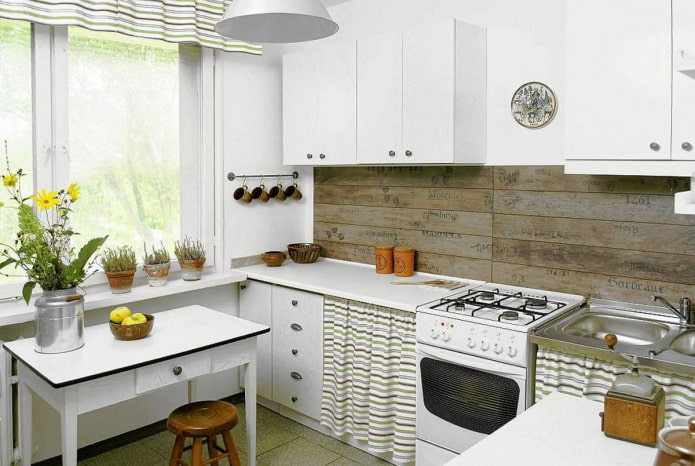

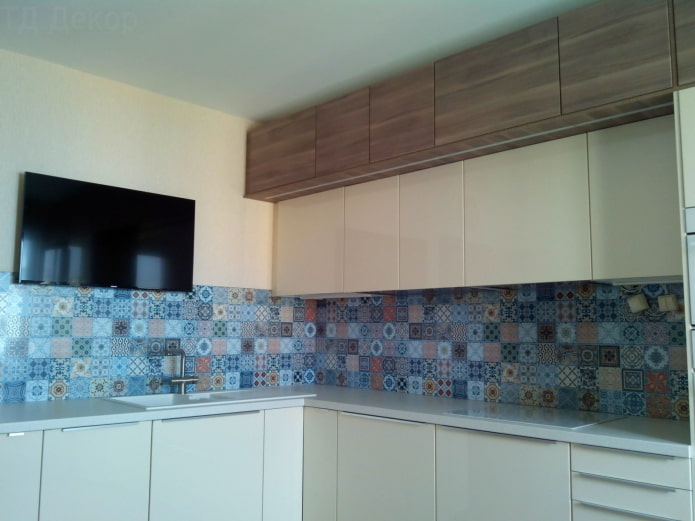
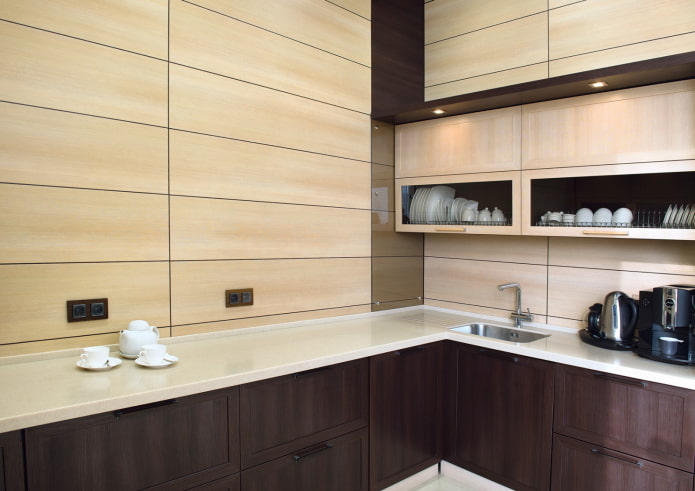
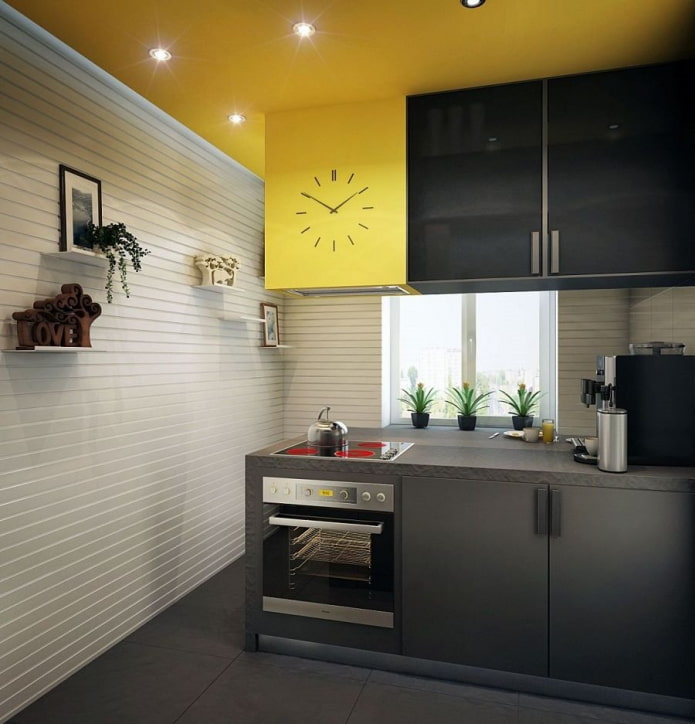


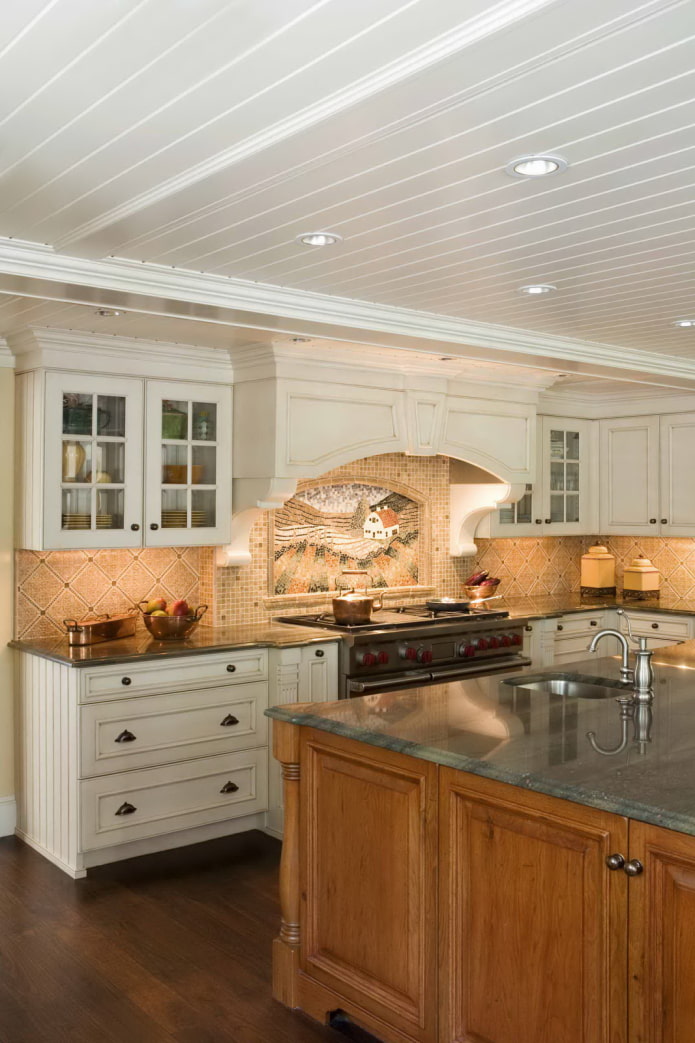
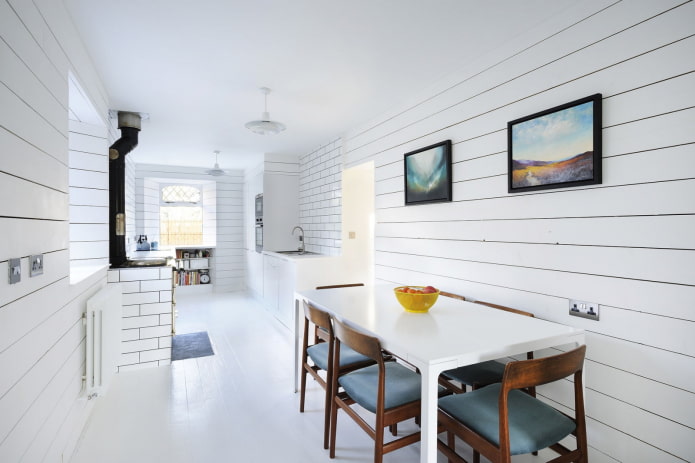
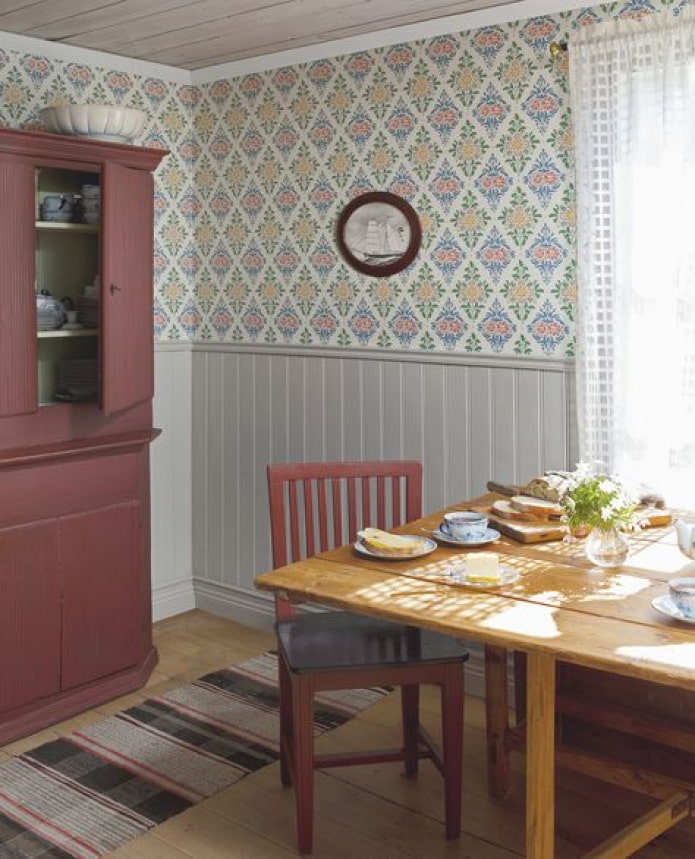
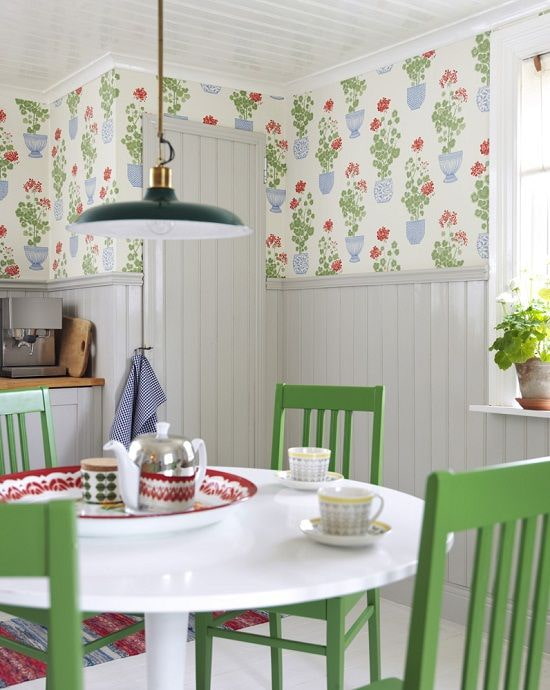
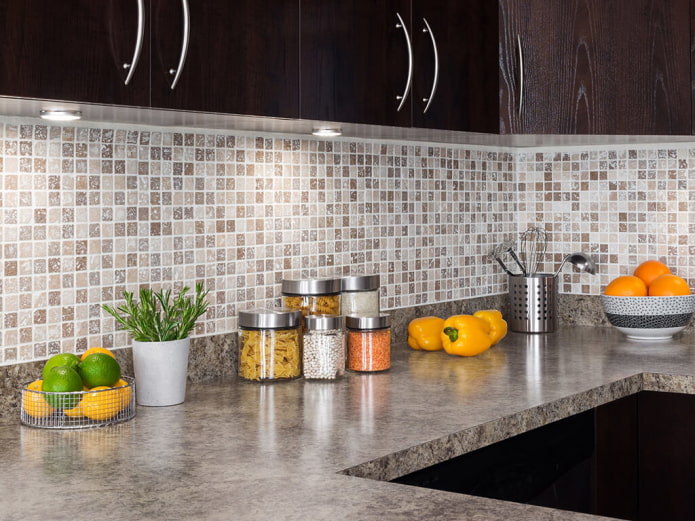
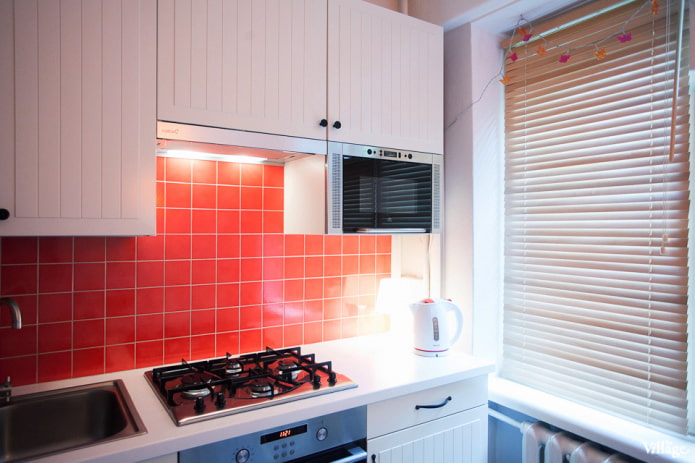
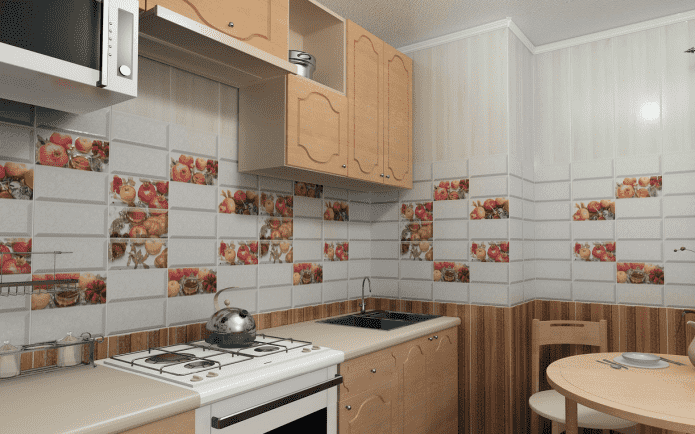
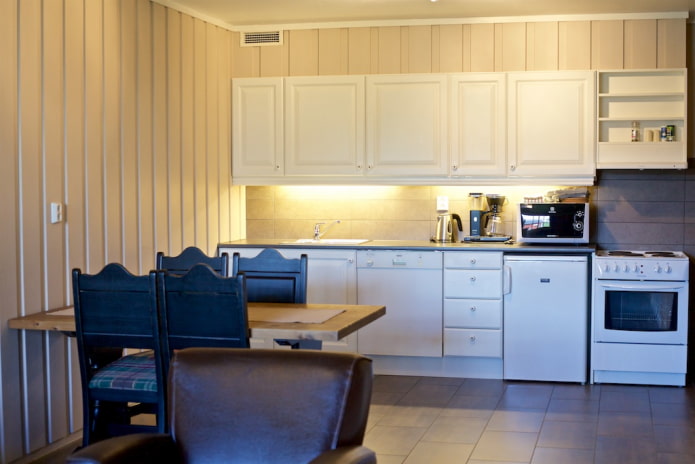
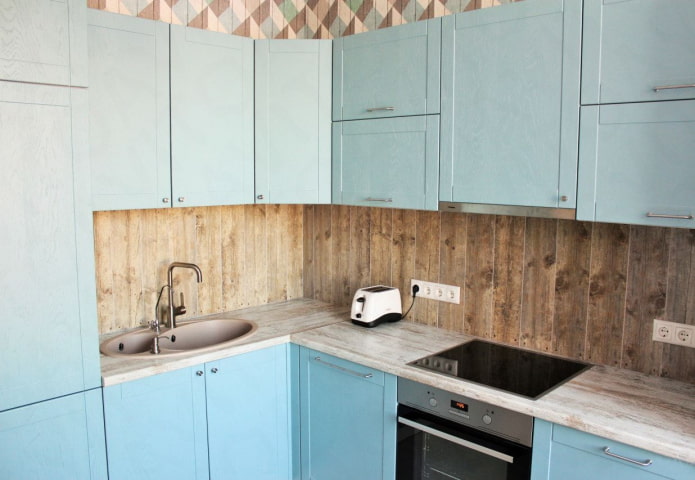
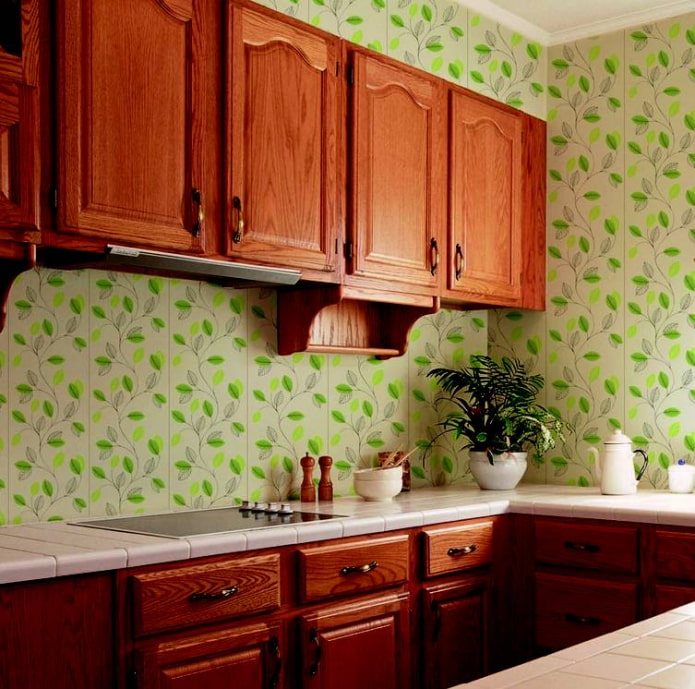

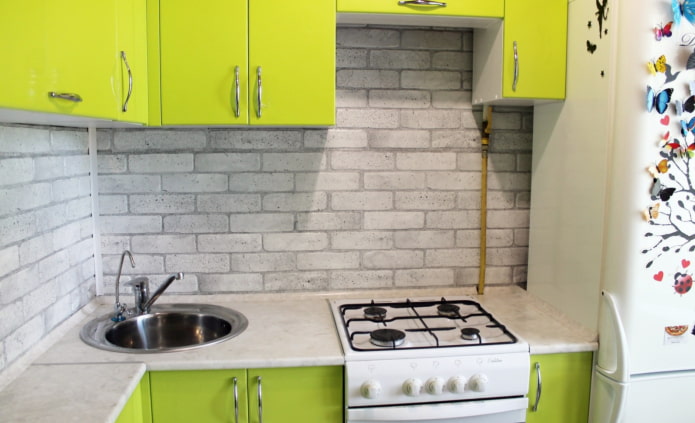
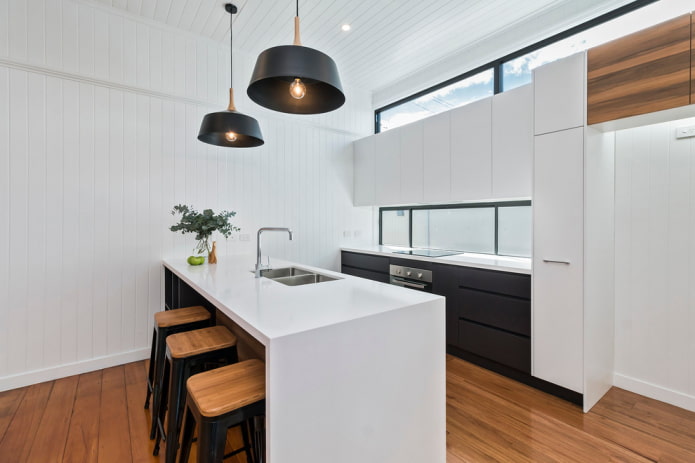

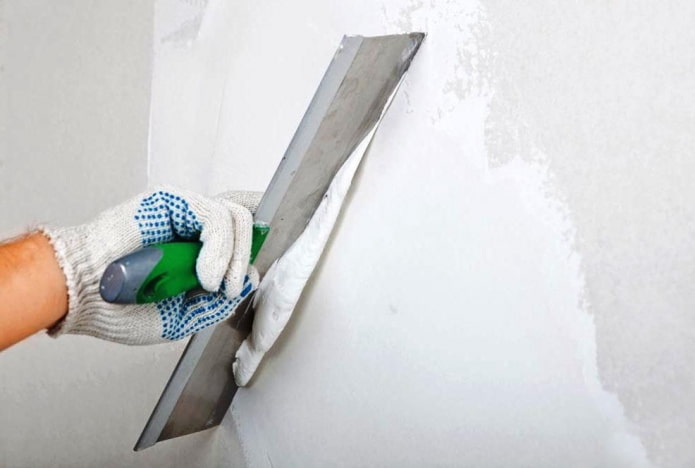
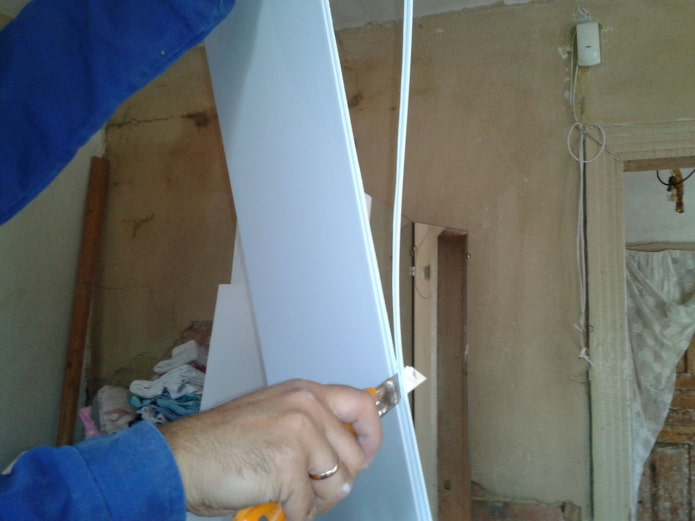
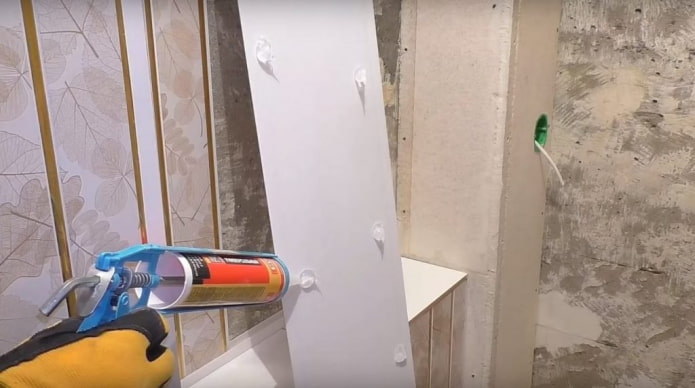
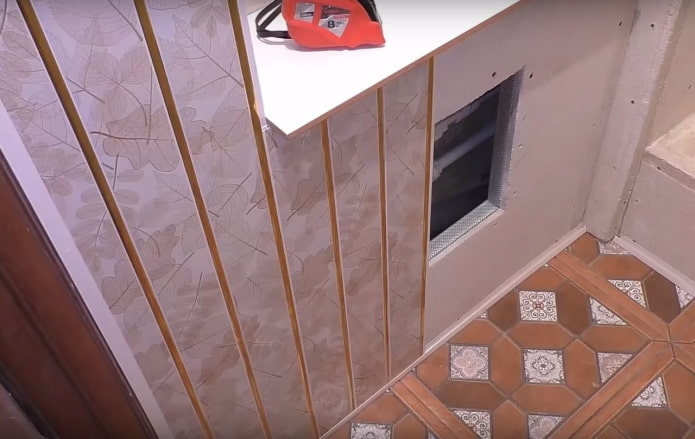

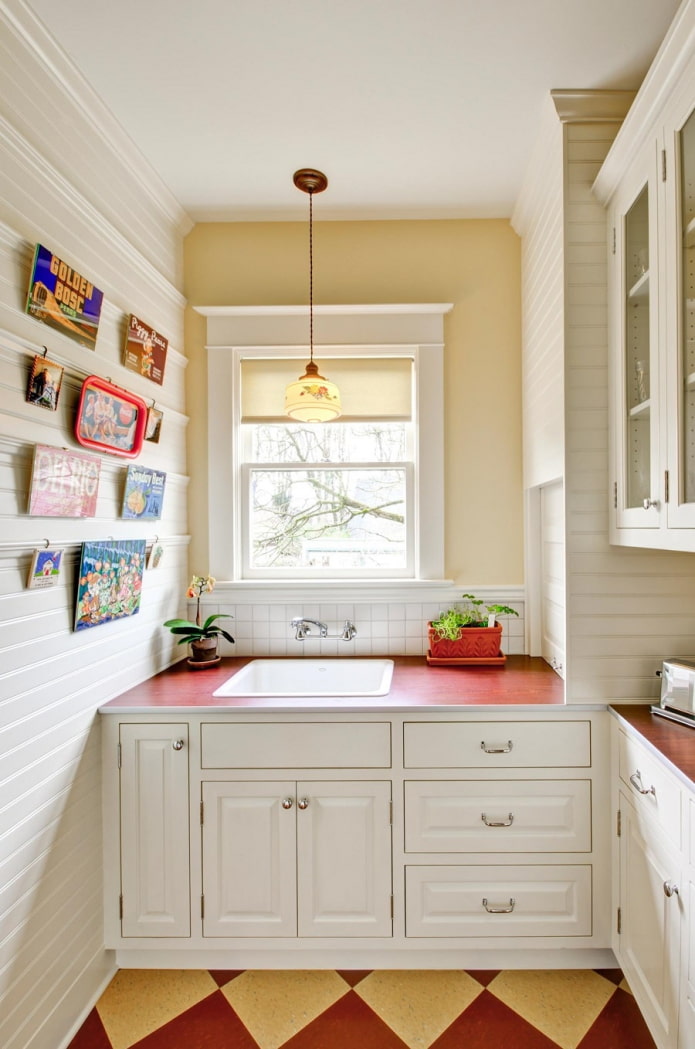
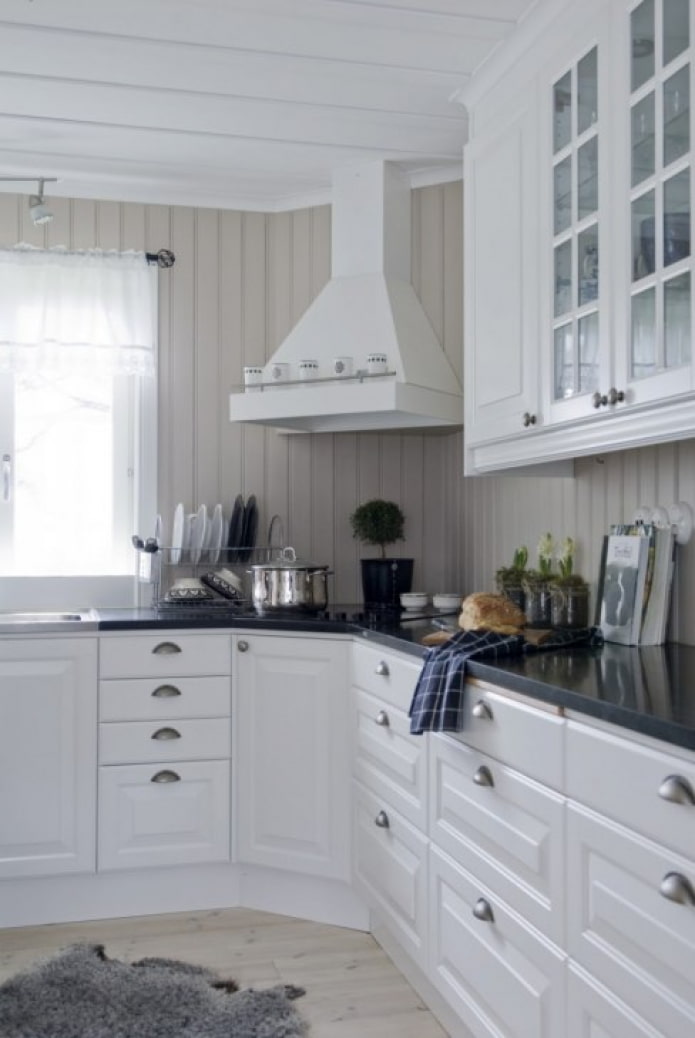


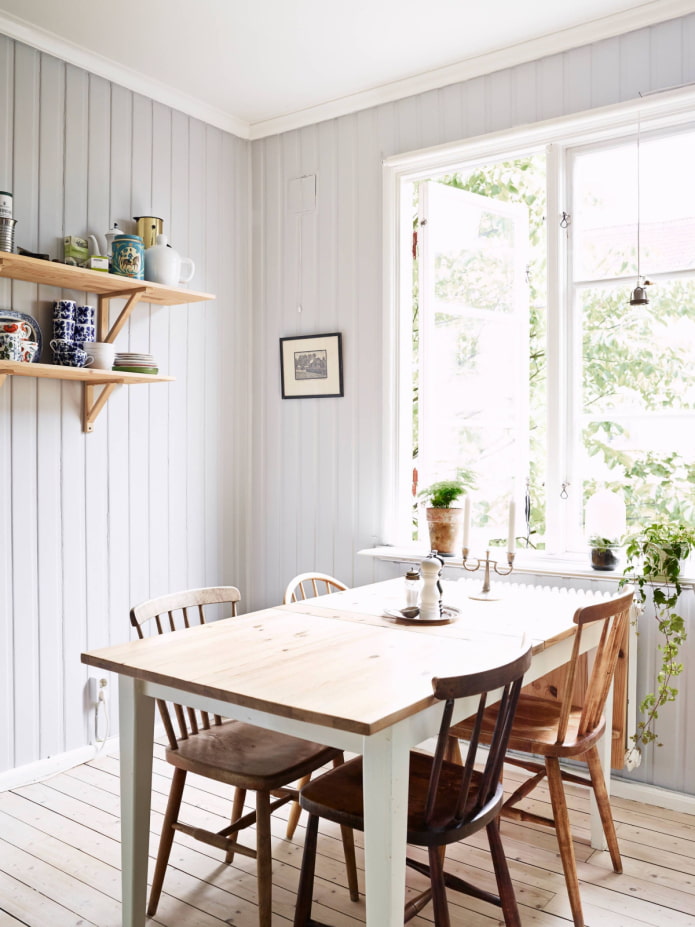
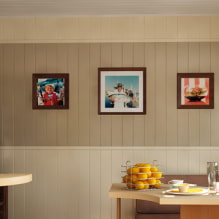
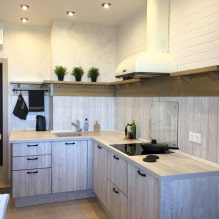

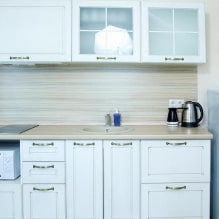

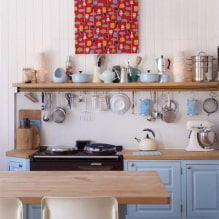
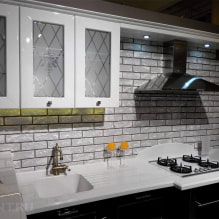

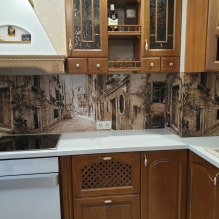
 How to choose the color of your kitchen sink?
How to choose the color of your kitchen sink? White kitchen set: features of choice, combination, 70 photos in the interior
White kitchen set: features of choice, combination, 70 photos in the interior Black set in the interior in the kitchen: design, choice of wallpaper, 90 photos
Black set in the interior in the kitchen: design, choice of wallpaper, 90 photos How to choose curtains for the kitchen and not regret it? - we understand all the nuances
How to choose curtains for the kitchen and not regret it? - we understand all the nuances Design of a white kitchen with a black countertop: 80 best ideas, photos in the interior
Design of a white kitchen with a black countertop: 80 best ideas, photos in the interior Kitchen design with green wallpaper: 55 modern photos in the interior
Kitchen design with green wallpaper: 55 modern photos in the interior